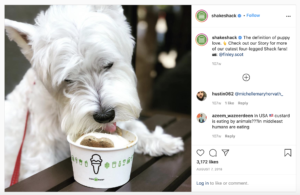How to Utilize Instagram at Every Step of the Sales Journey
Instagram continues to be a valuable marketing tool for many brands, especially as the popularity around influencer marketing continues to grow as well. However, not many businesses use their own profile to build a complimentary marketing channel to create a more effective sales journey for their customers.
With that being said, here are tips to utilize your Instagram profile at every step of the sales journey.
Step 1 (Top of the Funnel): Post engaging stories
Stories continue to be an increasingly effective marketing channel, especially with Instagram’s most recent update and the ability to include clickable links within the frame.
One of the most valuable story features being “swipe-up.” This can be added to the bottom frame of a story and allows users to swipe up to be redirected to a brand’s website or a specific landing page. Because of the nature of this feature, it’s generally highly-converting. The only downside is not everyone has access to it. To qualify for the feature, your profile has to have at least 10,000 followers and be verified. While this takes some work, it’s still very attainable.
When it comes to stories, it’s important to not only post sales content. This is a good way to lose followers quickly. Instead, focus on being engaging and incorporate soft-sales when it feels natural. You can add polls, quizzes and Q&A’s to stories to make it easier for your audience to engage with you. The more people have engaged with a brand at the top of the sales funnel, the easier it will be to move them to the next step.
Step 2 (Middle of the Funnel): Curate and display social proof
This is the stage of the journey where a customer decides whether to leave or give your brand a chance. Social proof can be a big factor in this decision. Many retail brands have started to use regular customers’ Instagram posts, showcasing them in their products on their website. This shows that real people have purchased your product, increases engagement and can help build a more loyal community.
If you go about this strategy and incorporate customers’ content yourself, be sure to ask for their permission first. This can be as simple as commenting on their original post, or just direct messaging them.
Step 3 (Bottom of the Funnel): Retargeting
Since Instagram is owned by Facebook, they have the same retargeting abilities when it comes to ads. Facebook enables businesses to target both Facebook and Instagram ads to people who have visited your site and performed a specific action in the past. Even more valuable, you can retarget those who have abandoned their shopping cart without completing their purchase, making it easier to boost your sales funnel performance and trigger more action at the bottom of it.
Final Thoughts
Instagram can be a powerful tool to add to your marketing mix, especially when it’s used to its fullest potential.
Looking for an agency to increase Instagram engagement and turn your Instagram business into a customer converting machine? Reach out to us here!
Onimod Global releases the latest digital marketing news and essential marketing tips every Tuesday and Thursday! To catch up on the top digital marketing news and trends, click here. To find out more about who we are and what we do, click here.




